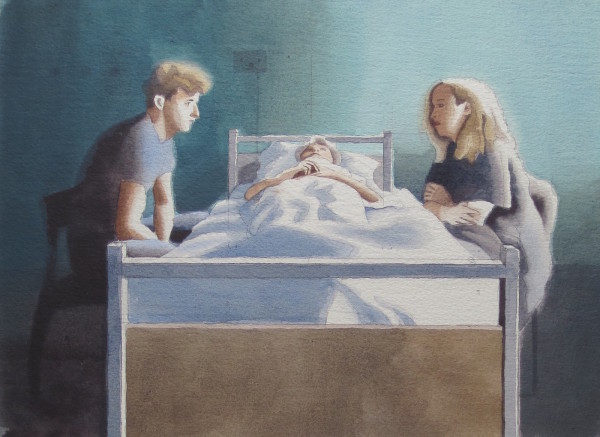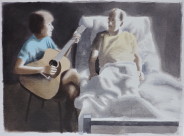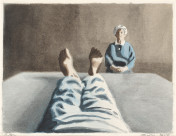A young man and woman sit facing one another across the bedside of an older patient, most likely the mother of one or both of them. No one tries to communicate. Being there is all that counts. The sharp perspective effect of the bed makes it seem as though that patient is physically receding from the other members of her family.
Robert was influenced by Norwegian artist Edvard Munch, famous for his themes of unhappy love affairs and family illness. Robert felt an affinity for his work, but he also allowed himself to disagree, from time to time, with Munch’s approach. For instance, Munch’s Chamber of Death (1892), was a crowded deathbed scene designed to show “the effect of death on the living.” (Ian Dunlap, Edvard Munch) Robert’s Family Illness retains this theme, but differs in almost every other way. In Robert’s image, it is not clear if this is a deathbed scene or not. It could simply be one of many visits in a long and uncertain process. Robert has eliminated Munch’s melodramatic hand-wringing and distraught expressions.
Today’s popular culture, shaped by Michael Crichton and Shonda Rhimes, has taken the theatrical depiction of illness to another level with frenetic, multi-plot TV doctor shows. In contrast to this, Robert stresses the banality and indeterminacy of the moment. At the same time, the waiting relatives he depicts are not relaxed. They’re not shown reading books or knitting. The family are not free to do anything but wait and watch, immobilized by a situation beyond their control.



